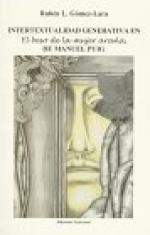|
This section contains 5,054 words (approx. 17 pages at 300 words per page) |

|
SOURCE: “Between Myth and Reference: Puig and Ionesco,” in Romanic Review, Vol. 87, No. 3, May, 1996, pp. 419-430.
In the following essay, Issacharoff and Madrid discuss the use of myth, stereotypes, and repetition in Puig's Kiss of the Spider Woman and Under a Mantle of Stars, as well as in Eugène Ionesco's La Cantatrice chauve.
What is myth? Why link it to reference? We have shown elsewhere that myth and reference are diametrically opposed to one another, given their different relationship with time.1 Myth eschews specific spatiotemporal coordinates. As Lévi-Strauss put it, “Tout se passe comme si la musique et la mythologie n'avaient besoin du temps que pour lui infliger un démenti. L'une et l'autre sont, en effet, des machines à supprimer le temps.”2 Vagueness of location and temporality3 necessarily undermines definite reference, whose role is to identify singular entities in time and space.
Myth blurs the coordinates...
|
This section contains 5,054 words (approx. 17 pages at 300 words per page) |

|


